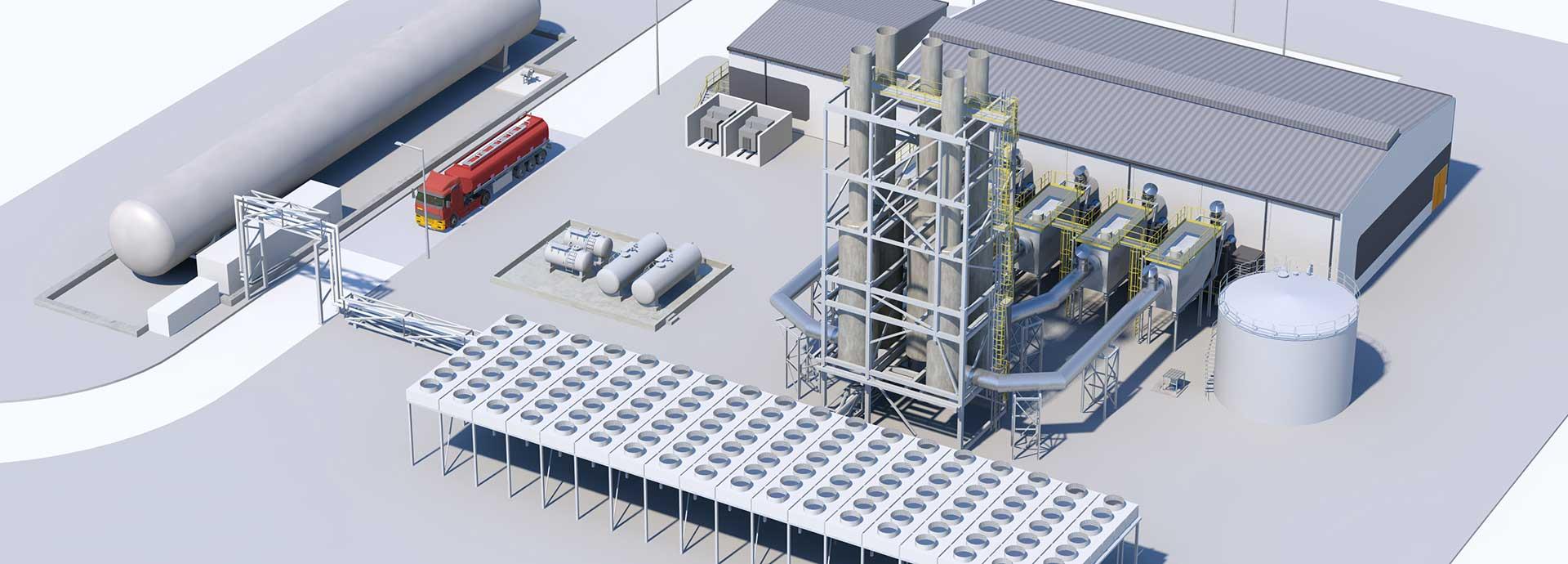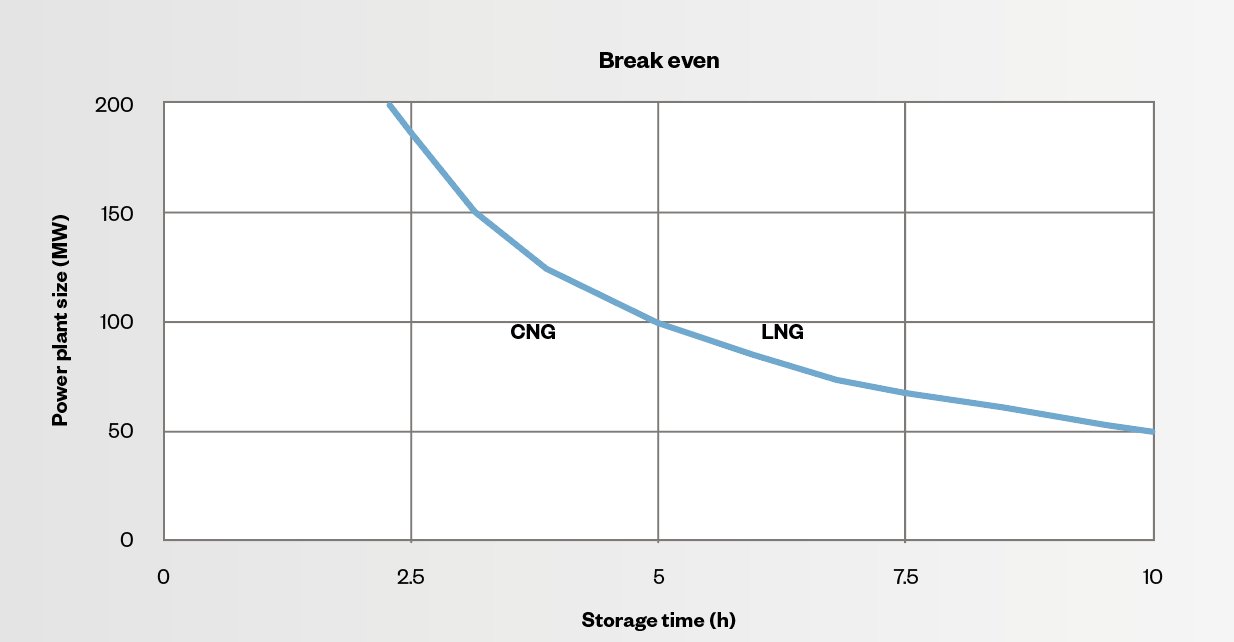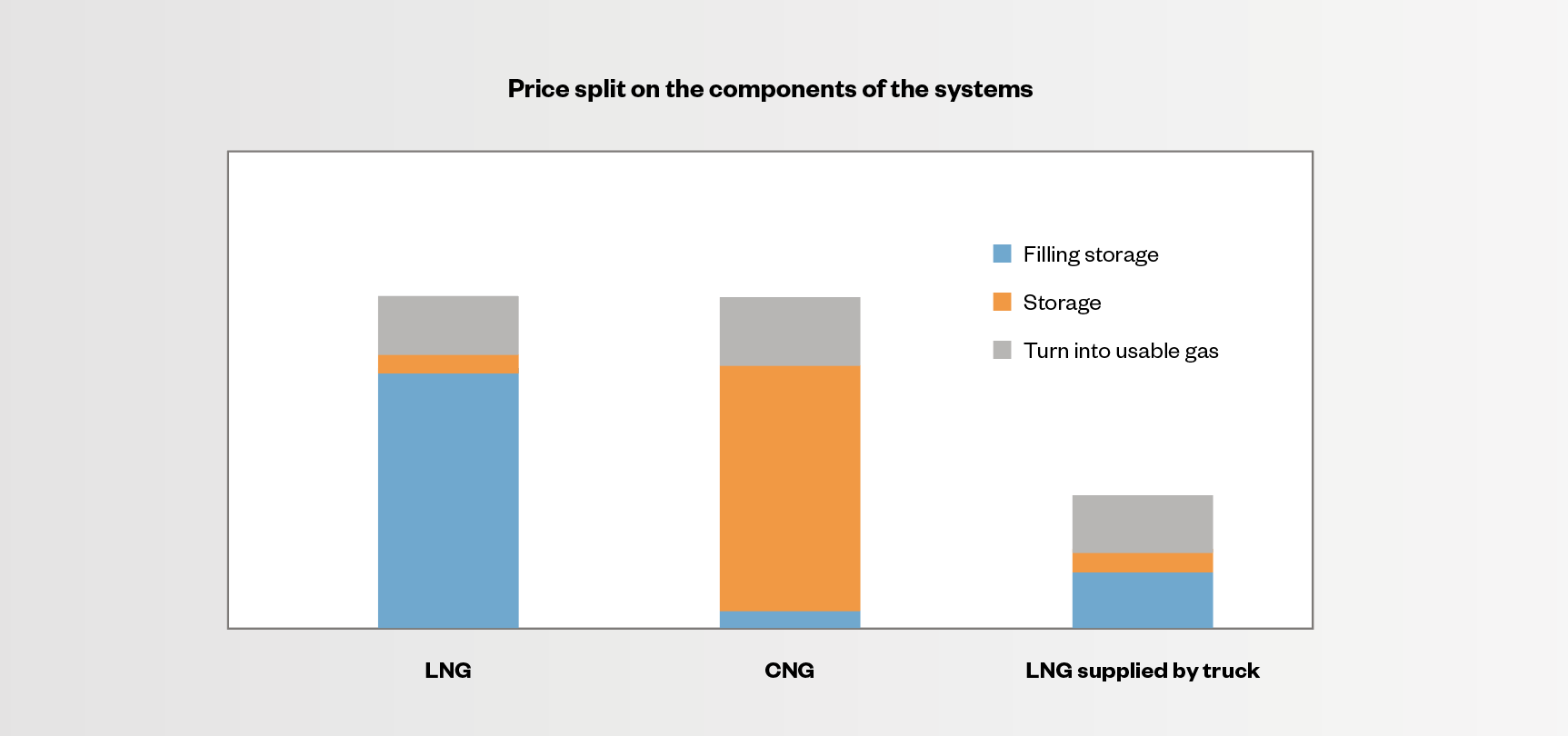

The market for energy production, using gas, is ever growing. More customers want to go for a pure gas engine for varied reasons – environmental, legislative or even political. With this change, though, comes the need for a reliable and affordable backup solution using gas fuels. This article will focus on the different ways in which natural gas can be used to ensure production of power in power plants.
The choices available for storing natural gas are limited, particularly for small-scale solutions. We either need to compress the gas to compressed natural gas (CNG) or liquefy to liquefied natural gas (LNG). For large-scale solutions, on the other hand, there are other solutions available. Pumping gas in under bedrock or salt formations is a case in point. If we do not produce gas on site, we can get the gas to site in three different ways: by truck, ship or pipeline, or using a combination of the three.
If you intend to connect your power plant to a gas pipeline, you must answer two simple questions:
1. Can you always get gas from the pipeline at an attractive price?
2. Can you get the required volume you need?
Many pipelines are struggling to cope with high demand. This often leads to price spikes or shortages of gas during certain periods, which could further lead to costly outages or expensive power production.
When evaluating the backup options for a power plant the main focus should be on location. It is crucial to ask where the power plant is located in relation to a gas or LNG source and how it can be accessed.
If the plant is located inland, there is no point considering bringing the gas in by ship. If the plant is connected by good roads and at a short distance from an CNG/LNG plant, the easiest way to get gas is by using a truck loading system that supplies CNG/LNG. If the plant is located far away both from the coastline and its closest CNG/LNG facility, other means should be considered.
Using pipeline gas to create onsite storage can be an efficient way of ensuring gas availability and evening out spikes in supply.
Then comes the question: high pressure or low temperature, or in abbreviations: CNG or LNG?

Fig. 1 - The relative volumes of one unit of natural gas in different states.
Finding the optimal solution
When designing a CNG system, the pressure is the main point to consider. High pressures give a small storage volume but incur high costs in compressors and storage tanks. While safety measures from different pressures vary, legislations adds some limitations too. This has to be taken into account and optimised to see what is the optimal point in the equation.
It is good to note that the needed amount of backup fuel decides the feasibility of CNG.
If a large amount of fuel is needed and smaller footprint is attractive, LNG might be a better solution. Installing liquefaction equipment and LNG storage on site can give a reliable backup with a lot of flexibility. If short outages of pipeline gas are expected and the time between these are long, the capacity of the liquefaction system can be small (and cost-efficient) and the storage can be bigger to give a longer backup time.
Figure 1 shows the relative volume of gas in different storage solutions. The figure shows the little space LNG takes compared with uncompressed natural gas. The volume requirement for a CNG system at 60 bar is already significantly smaller.
In order to show the difference between the solutions, let’s look at a case study.
One power plant, a 100 MW peaking plant that runs five hours per day, is located on an island with limited infrastructure and no LNG available. It uses a pipeline with a limited gas volume. The pipeline gas cannot be used during peak hours of the day. However, the volume during off-peaking is sufficient for a larger offtake. This means two of the five hours it runs, the gas supply from the pipeline is not enough. A small backup storage for short-term storage is needed. The only acceptable solution is to use pipeline gas during off-peak hours and turn it into CNG or LNG for storage.
The most expensive equipment on CNG plants is the storage tanks and the most expensive part of a small-scale LNG plant is the liquefaction. The volume of gas needed to be stored for the backup operation cannot be changed, so the possibility to affect the size of the LNG system is limited. The size of the CNG plant can be affected by using higher pressure.
A comparison was made to find a break-even between the investments of the two solutions. The off-take from the pipeline into the storage solution and the filling of the system is continuous. The system gets filled in a week. The total number of hours of backup power is presented in Figure 2.
The graph shows that, for example, when building a 100 MW power plant it is more cost efficient to build a compressor station and a CNG storage facility as long as no more than five hours of backup is needed. If, however, the assumption is that the gas pipeline will have outages of more than that it is more cost-efficient to use a liquefaction process and have LNG storage.
In Figure 3, a price split between the two different solutions can be found. The case is for a 100 MW power plant at the break-even point (five hours of backup power needed per week). It can be read from the figure that the major cost for this size of LNG plant is the liquefaction system, but with the simpler system of the CNG plant, storage accounts for the major cost. The cost for the regasification system for the LNG system and the pressure reduction unit in the CNG case are relatively close in cost.
The example location explained above did not have the possibility to get LNG delivered to site. A comparison with the same system with the opportunity of getting LNG supplied by truck is included in Figure 3. The advantage to the liquefaction on site is that the production of LNG is much cheaper, and the storage costs are much lower when compared to the CNG case. In this case the main components in the system are a truck loading station to receive LNG, an LNG tank for storage and a regasification system for restoring the liquid to gas.

Fig. 2 - Break-even point for investments between the CNG and LNG solutions,
where the solution is favourable for LNG on the right and CNG on the left.

Fig. 3 - A rough price split between the different solutions for a 100 MW power plant at the break-even point as well as a comparison to the cost of a system supplied by LNG trucks. (Note that this is a simplified study without considering the limitations of the systems in question.)
Money matters
The CAPEX difference between producing gas backup on-site and bringing LNG to site is large. The limitation with the latter solution is that the plant is dependent on getting fuel delivered to site. This has to be timed and planned, and the fuel has to be bought from an LNG plant. The OPEX of this solution is commonly higher than those of both the CNG and the LNG case, as the LNG has to be contracted and transported to the site.
The same comparison could be done to trucking CNG to the site, or using ships for LNG or CNG transport. The CNG trucking and shipping is, in certain areas, a widespread and tested technology, and in other areas it is virtually non-existent. The optimal solution is based on the availability of these products.
The case study presented only gives a snapshot of the situation of one case in a specific region. The case will be very different if we do the same exercise for another area, another off-taker or a different filling time for the project. If the footprint can be larger on site, the equation could be different: if the price for storage changes, the preference moves again towards CNG.
In the end, what backup solution is needed depends entirely on the on-site conditions. The first question to address is the size of the backup. Is the storage supposed to be for one hour, one day or one week? The possibility of bringing LNG to site is the second question: where can it be sourced and how will it be delivered to site? If the distances are long, or the prices for transportation are high, it might not be a feasible solution to rely on fuel being transported to site. If it comes down to producing backup fuel on-site, the possibilities need to be weighed against each other: is compression the most cost-efficient way or is it liquefaction?
For a way to start, please see Table 1. The key questions that need to be answered are given with examples of what the answers could be. Every aspect has to be reviewed to reach an optimal solution, and this is not always an easy task. The answers are not always clear and they might even change during the project development. The sure thing is that solutions exist (in abundance) and at least one solution is possible for each power plant.
 Table 1 - Where to start when figuring out the backup system for your gas-pipeline-connected Wärtsilä power plant.
Table 1 - Where to start when figuring out the backup system for your gas-pipeline-connected Wärtsilä power plant.
Author: Hanna Berg, Application manager, LNG, Wärtsilä Energy Solutions, mail: hanna.berg@wartsila.com
Did you like this? Subscribe to Insights updates!
Once every six weeks, you will get the top picks – the latest and the greatest pieces – from this Insights channel by email.


